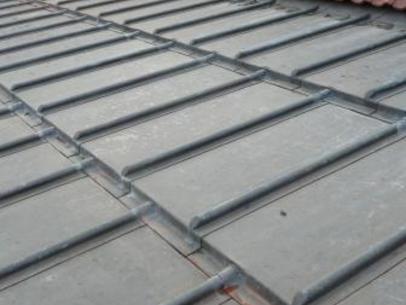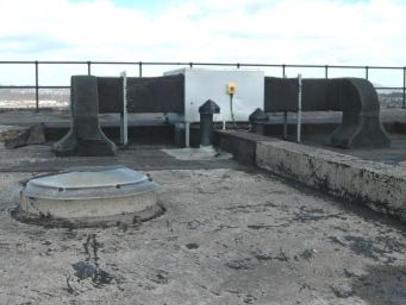Pointing is the material between stones. Lime mortar is better than cement. Your building will need repointing several times during it’s lifetime.
What’s the point of pointing?
 Stone damaged by cement pointing.
Stone damaged by cement pointing.
Pointing separates and provides a bedding for stone and brick. It should not try to act like glue, sticking materials together.
Contrary to most people’s expectations, ‘weak’ pointing is better than ‘strong’. ‘Weak’ pointing refers to pointing that is porous, so water evaporates through the pointing, rather than through the stone. This enables the stone to dry faster. This is important because water in the stone expands as it freezes and damages the stone.
Lime-based mortars are weak and cement mortars are strong. So, lime is recommended for all work to stone.
Types of mortar
Natural hydraulic limes are classified according to their strength. Stronger hydraulic limes are used on exposed chimneyheads or to form flaunching between slates and the skew.
Lime mortar is added to an aggregate (sand, gravel, or crushed stone). In renders and plasters, horsehair may be added to give increased strength. The aggregate gives texture and colour, so it is important to try to match it with the original lime mortar.
If your building is listed, then samples of the mortar and stone should be analysed to ensure the new lime mix is compatible.
As hard cement mortars dry, they tend to shrink, resulting in hairline cracks that draw in moisture. The impermeable mortar prevents evaporation from the stone, leaving it wet and prone to damage.
 Good pointing. Note the pointing is slightly recessed from the face.
Good pointing. Note the pointing is slightly recessed from the face.
Repointing
A good stone mason will:
- remove cement pointing where loose and not damage stone further by trying to rake out firmly-fixed cement mortar
- not widen joints as old mortar is raked out
- repoint with lime mortar made with correct colour and type of sand to match existing
- use a weaker (more porous) mortar mix than surrounding stone
- not cover the face of the stone with pointing
- point fine ashlar joints carefully with lime putty, crushed chalk, and linseed oil mix, and protect stone faces with masking tape
- not carry out lime pointing in frosty or wet weather and protect the pointing from night time frosts
Professional help recommended?
Although the work may appear straightforward, ensure your builder or tradespeople have the skills for the job. If in any doubt, get professional help to specify and organise the repair.
Further information




